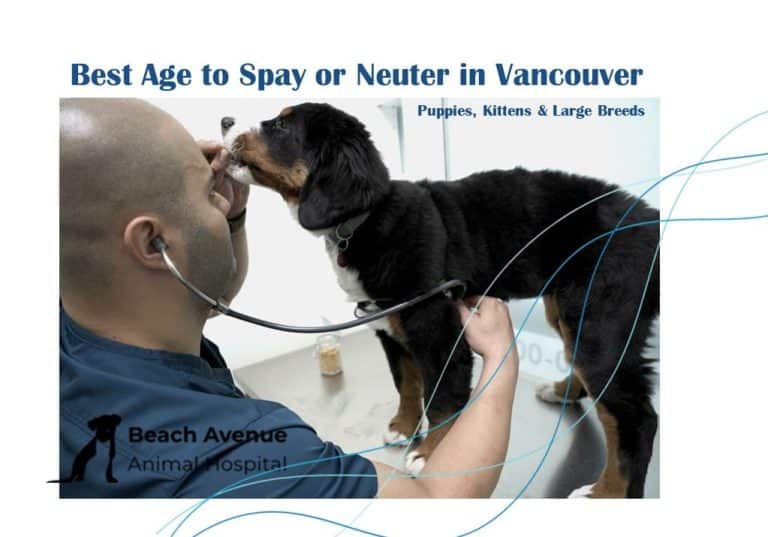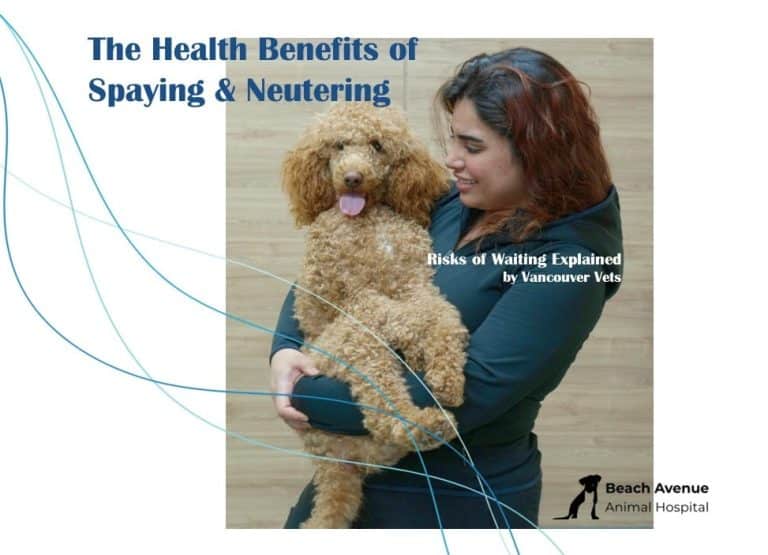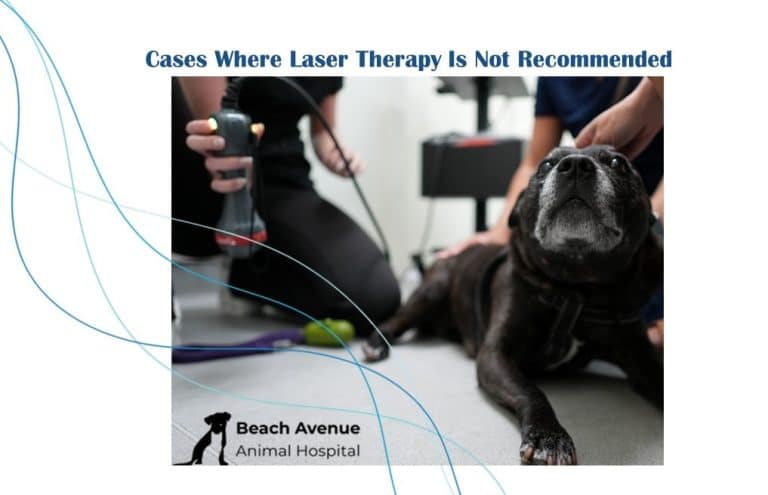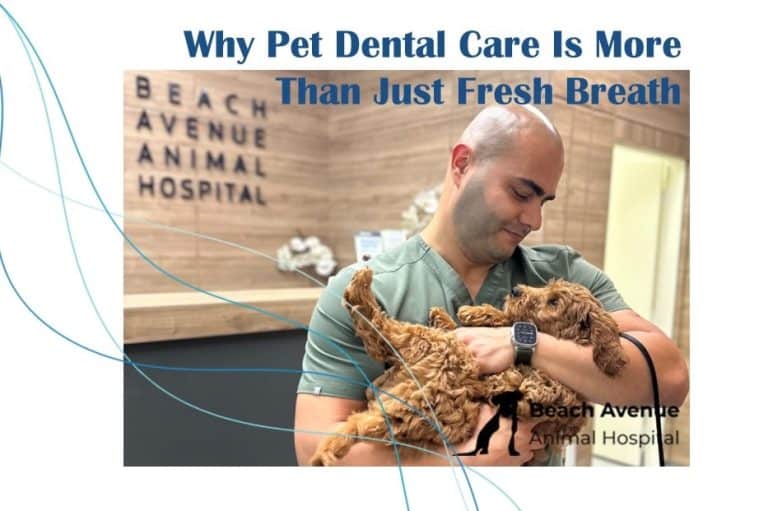When summer warms up along the coast, dogs can overheat faster than most people realize—especially on sunny seawall walks, packed trails, or in parked cars. At Beach Avenue Animal Hospital, we see a spike in heat-related issues every year. This guide covers the signs of heatstroke, what to do immediately, when to see a vet, and how to keep your dog safe through the hottest weeks.

Dog Heatstroke: Signs, Stages, and Risks
Early dog heatstroke symptoms (panting, drooling, red gums)
Watch for heavy panting, thick drool, bright red or tacky gums, restlessness, rapid breathing, and a warm body to the touch. Dogs may refuse to walk, search for shade, or seem unusually thirsty.
Severe signs of heatstroke in dogs (collapse, seizures, confusion)
Escalating symptoms include vomiting or diarrhea, staggering, confusion, glassy eyes, collapse, or seizures. These are medical emergencies—cool your dog and head to a veterinarian right away (see first aid below).
High-risk dogs in summer (brachycephalic, seniors, overweight, medical conditions)
Flat-faced breeds (pugs, bulldogs), thick-coated dogs, seniors, overweight pets, and those with heart or respiratory disease overheat more quickly. Pre-summer risk assessments and weight checks help keep vulnerable dogs safer—book a Pet Wellness Examination.
First Aid for an Overheated Dog (cool first, transport second)
How to cool a dog down safely at home
-
Move to shade or air-conditioning.
-
Wet the neck, chest, belly, and inner thighs with cool (not cold) water.
-
Use a fan to boost evaporative cooling.
-
Offer small sips of water if fully conscious.
-
Start making your way to the vet if symptoms are more than mild.
What not to do (ice baths, heavy wet towels, delayed transport)
Avoid ice baths and thick wet towels that trap heat. Don’t wait to “see if it passes” once severe signs appear—complications can progress quickly.
Vancouver/BC scenarios: hot cars, seawall runs, trail hikes, hot pavement
-
Parked cars heat dangerously fast, even with windows cracked.
-
Midday seawall runs and steep forest trails add exertion to heat.
-
Hot pavement can burn paws—if it’s too hot for your hand, it’s too hot for them.
If your dog shows severe signs, begin cooling and head to the clinic. For urgent directions or help, use Contact Us.

When to See an Emergency Vet (timing matters)
Red flags that require urgent care now
Collapse, seizures, unresponsiveness, continued vomiting/diarrhea, very high or falling body temperature with weakness, or worsening breathing are red-flag emergencies.
What your vet will do on arrival (IV fluids, oxygen, temperature control)
Expect rapid triage, temperature control, oxygen support as needed, and IV fluids to stabilize circulation. Your vet will also evaluate for complications affecting the gut, brain, clotting system, kidneys, and liver.
If you’re unsure, err on the side of caution—start cooling and come in. Need help right now? Contact us.
Vet Care & Recovery After Heatstroke
Bloodwork, electrolytes, and organ checks (kidney/liver, clotting)
Heatstroke can damage multiple organs. We typically run bloodwork and electrolyte panels and may repeat tests over 24–72 hours to monitor for delayed complications.
Imaging and monitoring (ECG, X-ray/ultrasound if indicated)
Depending on symptoms, your vet may use imaging or ECG monitoring to check for secondary problems such as lung changes or heart rhythm issues.
Recovery support for inflammation and pain
Some dogs develop lingering muscle soreness or inflammation after an overheating episode. Ask your vet whether laser therapy for dogs could help with recovery and comfort in the days that follow.
Follow-up wellness exams assess hydration, weight, airway health in brachycephalic breeds, and fitness plans tailored to summer conditions.
Summer Dog Safety Tips That Work in Coastal BC
Safe dog walking temperatures & best times (morning/evening)
Plan walks for early morning or late evening, when pavement and air temperatures are lower. Choose shaded routes and build in breaks.
Hydration, shade, paw protection, and rest breaks
Carry water, offer frequent pauses, and rest in shade. Consider booties if surfaces are hot and trim heavy coats to a vet-approved length (never shave double coats to the skin).
Gear checklist for hot days (portable water bowl, cooling mat, car-safety rules)
A collapsible bowl, cooling mat, breathable harness, and sun-safe car routine make outings safer. Review your dog’s preventive plan and seasonal risks during your next Preventive Veterinary Care visit.

Final Word & How We Can Help
Heat-related illness can escalate fast, but with early recognition, smart first aid, and timely veterinary care, most dogs recover well. If your pet shows concerning signs, start cooling and come in—use Contact Us for directions and urgent questions. To lower your dog’s risk all summer, book a Pet Wellness Examination or Preventive Veterinary Care review with the team at Beach Avenue Animal Hospital.
FAQs about heat-related illness in dogs
- What are the earliest signs my dog is overheating?
Heavy/rapid panting, restlessness/seek shade, drooling, red or tacky gums, fast heart rate; may progress to vomiting/diarrhea. Recognize these early to prevent escalation. - What’s the very first thing I should do if I suspect heatstroke?
Move your dog to a cool, well-ventilated area and start cooling immediately—then head to a vet. Current best practice is “cool first, transport second.” - How do I cool my dog properly at home?
Use cool (not scalding hot) water and air movement: wet the neck/chest/belly/groin and use a fan or A/C. For young, healthy dogs, cold-water immersion is very effective; for older or ill dogs, pour water over the body with airflow (evaporative cooling). Avoid pouring water near the head (aspiration risk). - Should I use ice baths or very cold water?
Cold-water immersion is endorsed by recent veterinary research for appropriate candidates and is not shown to cause harmful “shock.” If immersion isn’t suitable, use evaporative cooling (water + airflow). - Can I give water while I’m cooling my dog?
Yes—offer small sips if your dog is fully conscious. Do not force drinking. - Which dogs are at highest risk in summer?
Brachycephalic (short-nosed) breeds, thick-coated dogs, seniors, overweight pets, and dogs with heart/respiratory disease or other illness. Exercise, humidity, and confinement raise risk. - How dangerous are parked cars?
Very. Temperatures in vehicles rise rapidly and can become life-threatening in minutes. Never leave pets in parked cars; in BC, call local authorities/BC SPCA if you see an animal in distress. - What will the vet do, and why is aftercare important?
Expect rapid triage, active cooling, IV fluids, oxygen as needed, and diagnostic testing (bloodwork, electrolytes, ECG/blood pressure, coagulation) to check for organ injury. Follow-up bloodwork is often recommended after discharge to catch delayed complications. - How can I prevent heat problems on walks or beach days?
Walk early mornings/evenings, provide shade and frequent water breaks, and avoid hot surfaces. A quick pavement check helps: if you can’t comfortably hold the back of your hand on it for several seconds, it’s too hot for paws. - Can dogs get heatstroke even when it isn’t extremely hot outside?
Yes. Humidity, vigorous exercise, poor ventilation, and confinement (kennels, cars) can trigger heatstroke even at moderate ambient temperatures. - Is it illegal (and how dangerous) to leave my dog in a parked car during warm weather?
Extremely dangerous—and potentially illegal. The B.C. government warns vehicle temperatures can rise rapidly and become life-threatening within minutes; in as little as 20 minutes it can be a matter of life or death. Owners can face charges under B.C.’s Prevention of Cruelty to Animals Act, and SPCA officers have authority to enter locked vehicles to relieve animals in critical distress. For details, see the B.C. government’s advisory on pets in hot cars.










